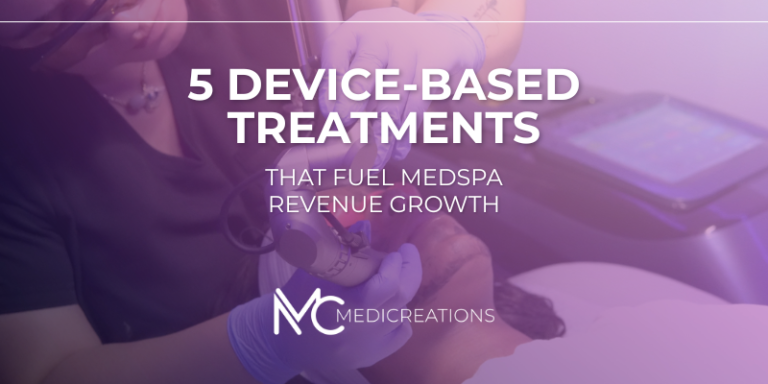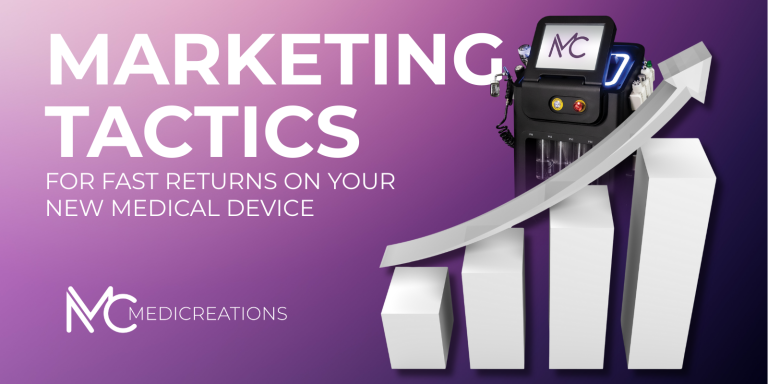Last week, we laid out the five most profitable device-based treatments to drive MedSpa revenue growth.
This week, we’re going to share four of the least profitable services and tactics. If you’re trying to grow your business, avoid these mistakes!
We’re not going to leave you hanging with these problems either – read to the end for an audit technique that will help you avoid all of these business wrecking challenges.
Let’s start with a general technique to identify the profit draining treatments and tactics in your practice.
Begin by calculating the gross margin you need per-chair-hour, then test whether a service can clear it after consumables, loaded labor, room time, and customer acquisition cost. Your clinical outcomes may be solid, but the economics might not be. The traps tend to hide in plain sight—long appointments priced like quick ones, expensive consumable requirements that tax every treatment, and discounts that ignore variable cost.
The list below isn’t a takedown of modalities. Think of it as a filter. Use it to pressure-test new offerings before they quietly drain calendar space and cash.
1) Hour-long non-device facial priced like quick treatments
A 60-minute facial commonly sits around a $96–$189 national range (Thumbtack). Pair that with ~$20/hour median esthetician wages before payroll burden and room overhead, and there isn’t much margin left—especially if the client is a one-time visitor. If you can’t convert these into memberships or multi-visit plans, the hour disappears and so does your margin.
2) Dermaplaning sold as a bargain standalone
Dermaplaning is quick on paper and slow on a Profit & Loss. A typical session is ~20–30 minutes, but reputable guides allow “minutes to an hour” depending on scope and skin status—meaning your chair time isn’t truly fixed. Prices commonly sit around $75–$250 in the U.S., which sounds fine until you layer in wages and compliance.
Median esthetician pay is ~$20/hour before payroll tax/benefits and room overhead (Bureau of Labor Statistics). Each treatment requires a single-use sterile blade and proper sharps handling; even inexpensive 10R blades add recurring cost and OSHA requires immediate disposal in approved containers. Lastly, contraindications (e.g., active acne, recent isotretinoin) force last-minute reschedules that your menu price doesn’t cover (AmSpa).
3) Deep-discount vouchers on variable-cost services
Daily-deal style promotions have been shown to deliver mixed returns for local services with real variable costs (labor + consumables) (cleveland.com). They fill the book but can erode unit margin and train patients to wait for coupons unless tightly controlled (clear upsell path, limited quantity).
4) IV vitamin drips run as low-price “lounge” services
The drip chair looks busy, but the Profit & Loss tells a different story. IVs tie up a seat for a long stretch (Banner Health) and require licensed staff attention, line checks, and documentation. Consumables aren’t just the bag—tubing, catheters, additives, alcohol preps, sharps disposal, and cold-chain waste all live inside your Cost of Goods Sold. Expired inventory and partial-vial leftovers add quiet leakage. Stack a deep discount on top, and the hourly margin collapses.
If an IV service can’t clear your target gross margin per chair-hour after loaded labor and true Cost of Goods Sold—including waste assumptions—it doesn’t need better marketing; it needs a different pricing and scheduling model.
Action steps (run this audit in an hour)
1) Compute your true margin per hour.
Here’s how to do it. For each service:
consumables + loaded labor (use the Bureau of Labor Statistics wage as a floor, then add payroll tax/benefits) + room overhead.
Compare this to your treatment price and chair time, and target a minimum gross margin per hour.
2) Check Customer Acquisition Cost (CAC) vs. first-visit gross profit.
Pull last quarter’s marketing data. If your average CAC ≈ $285 (First Page Sage) and first-visit gross profit is lower, require packages/memberships or raise your price.
3) Rebuild discounting rules.
No open-ended vouchers on services with material variable costs! If you must discount, do it only in packages that protect hourly margin and Lifetime Value. Be sure to audit your redemption outcomes quarterly.
Conclusion
Profit grows when your menu behaves like a portfolio, not a souvenir shelf.
Keep only the services that clear your per-chair-hour target, can be scheduled without drift, and repeat on a cadence that pays back acquisition.
Everything else gets repriced, time-boxed, bundled into a higher-margin pathway, or retired. If you make those rules explicit—before the photos, before the promo copy—you’ll stop rewarding long appointments with thin spreads and start funding the services that actually move your Profit & Loss.
Run the numbers, rewrite the policies, and let the calendar tell you what stays.



